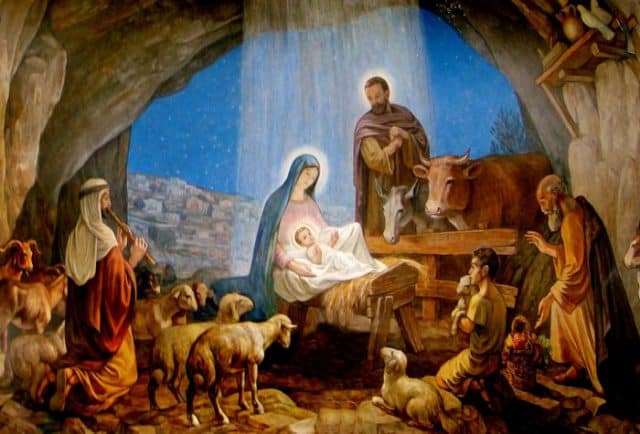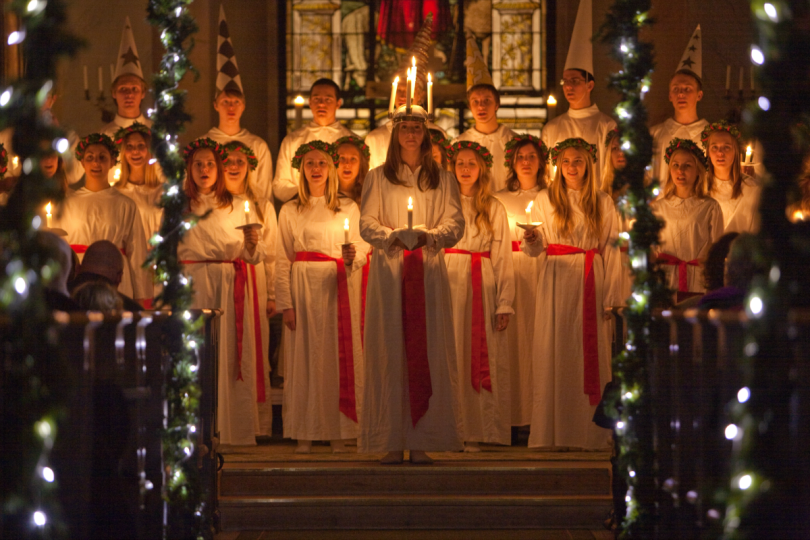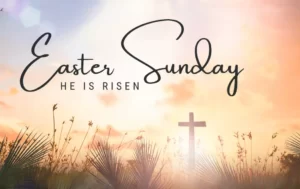Annually, on 25 December, individuals worldwide converge in celebration of Christmas Day, marking the birth of Jesus Christ. This festivity – extending beyond a single day into an entire season – engulfs participants in traditional activities: the melodic resonances of Christmas carols, the meticulous adorning of trees, the exchange of gifts, and conviviality of gatherings.
Yet, amid these customs, you might find yourself contemplating the deeper significance behind this event. What, you might ask, constitutes the authentic essence of Christmas? Furthermore, what correlation exists between these established traditions and the narrative of Jesus?
As you reflect upon the year that has elapsed, it becomes evident that challenges have manifested on both global and individual scales. Nonetheless, one should recognize the perennial nature of Christmas’s message. Despite external shifts in the world and the vicissitudes in one’s life, the essence of Christmas persists. It revolves around the seminal event of the birth of God’s Son, Jesus, and his mission to bestow upon humanity the gifts of love, hope and joy. This enduring message remains consistent and unaltered year after year. Consequently, in an era frequently marred by bleak narratives, Christmas message stands as an epitome of uplifting news deserving of veneration.
What is Christmas?
Christmas is a holiday celebrated predominantly by Christians around the world to commemorate the birth of Jesus Christ. The English designation, “Christmas,” translates to “mass on Christ’s day,” a term of relatively recent inception.
Historically, it was known by other names: “Yule” might have its roots in the Germanic “jōl” or the Anglo-Saxon “geōl,” both of which pertain to the winter solstice feast. Other languages possess analogous terms pointing to nativity, such as “Navidad” in Spanish, “Natale” in Italian, and “Noël” in French. The German denomination, “Weihnachten,” signifies “hallowed night.”
Historically, Christmas as a religious event are found in Christian Bible. The Gospels of Matthew and Luke narrate the events surrounding the birth of Jesus, describing it as a miraculous event, with angels proclaiming the arrival of a savior and wise men (or Magi) visiting the newborn, guided by a star. These accounts provide foundational elements for the liturgical and devotional practices of Christians.
While the precise date of Jesus’s birth remains uncertain, the 25th of December has become the widely accepted day for this observance. The holiday’s significance, customs, and practices, however, extend beyond its religious roots and have evolved over time, reflecting a blend of pre-Christian, Christian, and secular themes and traditions. In terms of liturgical practices, various Christian denominations celebrate Christmas with church services, nativity plays and the singing of carols. The season of Advent, observed by many Christian groups, serves as a period of preparation leading up to Christmas Day.
Origins and development of Christmas
The origins of Christmas can be traced back to a confluence of both pagan and Christian traditions and beliefs.
Pagan Roots: Before the widespread acceptance of Christianity, various cultures celebrated mid-winter festivals. For instance, the Roman Saturnalia, a festival dedicated to the god Saturn, was observed from December 17 to 24. During this period, conventional roles were reversed, gifts were exchanged, and businesses and schools were closed. Concurrently, the Roman festival of Sol Invictus or “Unconquered Sun” was celebrated on December 25, marking the “return” of longer days.
The Nordic Yule was another significant pre-Christian winter celebration. It commenced on the winter solstice and lasted for 12 days. During Yule, the Norse would burn a massive log in honor of the gods and to prompt the return of the sun. Feasts, storytelling, and other revelries were integral to the Yule tradition.
Christian Adoption: The exact date of Jesus Christ’s birth remains a matter of theological debate. However, by the 4th century, the Western Christian Church had adopted December 25 as the official date to celebrate the Nativity of Christ. It is postulated that this date was chosen to coincide with, and eventually replace, the aforementioned pagan festivals. The synchronization allowed Christian Church to ease the process of converting pagans by offering a Christian alternative, but one that fell on the same dates as their customary celebrations.
By the Middle Ages, Christianity had largely replaced the former pagan traditions in Europe, but some customs from those traditions persisted and were incorporated into the Christmas celebration. For example, the aforementioned Yule log, as well as the incorporation of evergreen trees, holly, and mistletoe, are all remnants of pre-Christian mid-winter celebrations.
Evolution of Traditions: Over the centuries, other customs became integrated into the Christmas celebration. St. Nicholas, a 4th-century bishop renowned for his generosity, evolved into the modern figure of Santa Claus, bringing gifts on Christmas Eve. The practice of carol singing, which began as pagan singing and dancing, was later incorporated by Christians, evolving into the tradition of singing songs that narrate the story of Christ’s birth.
By the Renaissance, Christmas was well-established as a major Christian feast. The story of the Nativity was a favored subject of artists such as Giotto, Botticelli, and Michelangelo, further embedding the religious significance of the day in the collective consciousness.
Modern Developments: The 19th century saw a resurgence in the celebration of Christmas, particularly in England and the United States. Charles Dickens’ 1843 novella, “A Christmas Carol,” played a pivotal role in redefining the holiday, emphasizing family, goodwill and charity. In the United States, Washington Irving and Clement Clarke Moore (through his poem “A Visit from St. Nicholas”) also contributed to shaping modern perceptions and traditions of Christmas.
By the 20th and 21st centuries, in many parts of the world, especially in Western countries, Christmas has assumed a significant cultural and economic dimension. The period leading up to Christmas sees heightened retail activity, with businesses offering special sales and marketing promotions tied to gift-giving. This commercial aspect, while criticized by some as detracting from the religious significance of the holiday, reflects the way in which Christmas has evolved as a cultural event with multifaceted meanings for different people.
Why is Christmas celebrated on the 25th?
One pivotal source that provides insight into the selection of December 25th as the date for Christmas is Sextus Julius Africanus, a prominent Roman historian from the 3rd century CE. Africanus, in his chronographical works, posited March 25th as the date of Jesus’ conception, which is also the date he ascribed to the creation of the world.
Following the conventional understanding of human gestation, this would lead to a birth nine months later, on December 25th. This conceptual link between the inception of the world and the conception of Christ signified a theological viewpoint that Jesus’ birth was not just a singular event in history but had cosmological significance, marking the renewal of creation.
Apart from Africanus’ computations, the choice of December 25th is also understood in the context of pre-existing pagan festivals. The Roman Empire, where Christianity began its rapid proliferation, celebrated the feast of Saturnalia, a festival in honor of Saturn, the god of agriculture, which took place from December 17th to December 23rd.
This was followed by the celebration of the birth of the Unconquered Sun (Dies Natalis Solis Invicti) on December 25th, a day marking the winter solstice and the renewal of the sun. As Christianity expanded, it was common practice to integrate or supplant pagan customs with Christian narratives to facilitate the conversion process. Therefore, positioning Christmas on December 25th might have been a deliberate strategy by early Christians to coincide with, and eventually overshadow, the popular Roman festival dedicated to the Sun.
Meaning of Christmas Day
Christmas Day is deeply rooted in the Christian tradition commemorating the birth of Jesus Christ. The circumstances surrounding his birth and the subsequent events carry profound theological, social, and cultural implications that resonate with believers and non-believers alike.
The narrative of Jesus’ birth offers a stark contrast to conventional royal births. As detailed in the Gospel accounts, particularly in Luke 2, Mary, pregnant with Jesus, traveled with Joseph to Bethlehem due to a mandated census. Upon their arrival, the lack of available accommodations forced Mary to deliver in what is believed to be a stable or barn. The newly-born Jesus was then placed in a manger, an animal’s feeding trough. This humble beginning, devoid of regal fanfare or luxury, encapsulates the profound theological message of God’s incarnation as a vulnerable human.
Throughout his life, Jesus experienced the full spectrum of human emotions and challenges — from persecution and loneliness to hunger and grief. This embodiment of the human experience is central to Christian theology, emphasizing that Jesus, despite his divine nature, was fully human. Such an incarnation underscores the message of God’s deep connection and empathy with humanity.
The concept of “Immanuel” or “God with us,” as elucidated in Matthew 1:23, amplifies this message. The very presence of Jesus on Earth symbolizes God’s commitment to being present in human struggles and triumphs. This presence, as per Christian doctrine, is not a distant or passive observation but a profound, active participation in human life, assuring believers that they are not isolated in their trials.
The angel’s proclamation to the shepherds, as mentioned in Luke 2:10, encapsulates the universal significance of Jesus’ birth. The angel’s words, heralding the arrival of good news that is a source of “great joy for all the people,” resonate across generations. This announcement carries threefold significance:
- Joy: In the midst of societal challenges and personal struggles, Jesus’ presence offers solace, strength and encouragement.
- Hope: The incarnate God promises constant companionship, ensuring believers that no adversity is faced in isolation.
- Inclusivity: The salvific message of Jesus’ birth, life, and eventual sacrifice is universal, transcending boundaries of ethnicity, culture and class.
As you see, Christmas Day, although originating from the story of the birth of Jesus, represents the convergence of profound theological truths and universal human emotions. Celebration is not only a birth but also a sacred commitment to humanity, promising hope, joy and unwavering companionship.
Why do we celebrate Christmas?
The act of gift-giving during Christmas is not merely a cultural or societal norm; it finds its origins in the theological narrative of God gifting humanity with Jesus.
This divine gift is a testament to God’s unwavering love, assuring believers of His presence and offering hope for both the present and the future. It is within this context that the contemporary practice of exchanging gifts with loved ones during Christmas can be understood. The act is a symbolic reflection of the larger, more profound gift of love and salvation bestowed by God through the birth of Jesus.
The narrative in the Gospel of Matthew 2:11 elucidates the visitation of the Magi, often referred to as wise men, to the infant Jesus. Recognizing the divinity and kingship of Jesus, they presented him with gifts of gold, frankincense and myrrh.
These gifts were not merely material but bore symbolic significance, reflecting the Magi’s acknowledgment of Jesus’ divine and kingly stature. For contemporary believers, the act of worship, thanksgiving, and prayer during Christmas is an extension of this biblical tradition, an opportunity to express gratitude for divine love, hope and joy.
While societal portrayals often emphasize material abundance – gauged by the number of presents under a Christmas tree or the lavishness of festive feasts – the true essence of Christmas remains consistent irrespective of these externalities. Whether one is amidst familial celebrations, experiencing the absence of loved ones, or in solitude, the fundamental message of Christmas – God’s unwavering love – remains undiminished. External circumstances, be it the nature of one’s dwelling or the scale of celebrations, do not alter this core truth.
when you celebrate Christmas, you are engaging with a message of universal love and hope. It serves as a reminder that you are cherished, never alone, and have access to hope and joy, regardless of your circumstances. This foundational truth embedded in Christmas celebration is what gives it enduring relevance and significance.
Traditional symbols often appear during Christmas
When come to the Christmas season, you are sure to encounter countless symbols, each carrying its own historical weight, meaning and cultural nuance. To appreciate the depth of this holiday season, you must recognize and understand these symbols.
- Christmas Tree: As you look around during the festive season, this is perhaps the most dominant symbol. Its origins predate Christianity, with various ancient cultures using evergreen trees to celebrate winter festivals. Today, when you decorate a Christmas tree, you are participating in a centuries-old tradition that bridges various cultures and eras.
- Mistletoe: When you find yourself under a mistletoe, you are participating in a tradition with Druidic origins. This plant, considered sacred by the Druids for its healing properties and symbol of life, is now a hallmark of Christmas romance.
- Christmas Star or Star of Bethlehem: As you top your tree with a star, you are commemorating the Star of Bethlehem, which, according to Christian tradition, guided the Three Wise Men to the birthplace of Jesus.
- Candles: When you light a candle during this season, you are echoing an age-old practice. Candles have historically symbolized the light of the world and the presence of Jesus in Christian traditions.
- Wreath: As you hang a wreath on your door, you are partaking in a tradition with dual significance. The circular shape symbolizes eternity, while the greenery represents continuous life and rebirth.
- Bells: Should you hear the ringing of bells, remember that they have historically signified the announcement of the birth of Jesus. Today, when you incorporate bells into your decorations, you echo this age-old celebration.
- Candy Canes: While you might see these as simple festive treats, the candy cane’s shape resembles a shepherd’s crook, symbolizing Jesus as the Good Shepherd.
- Holly: As you adorn your home with holly, recognize that its sharp leaves represent the crown of thorns Jesus wore, and the red berries symbolize His blood.
- Poinsettia: This bright red flower, native to Mexico, was integrated into the Christmas celebration due to its festive hue. When you display a poinsettia, you are incorporating a relatively newer symbol, but one deeply rooted in Christmas tradition.
- Gifts: When you exchange presents, you are not just partaking in a commercialized tradition but recalling the gifts the Three Wise Men brought to Jesus.
LotusBuddhas believes that, when you understand the meaning of these symbols, you will increase your understanding of Christmas and the countless traditions that converge to make it a globally celebrated festival.
Christmas traditions around the world
While the underlying essence of commemorating the birth of Jesus Christ remains constant, the manner in which different cultures mark this occasion is strikingly diverse, revealing much about their historical and socio-cultural contexts.
In Sweden, for instance, the start of the festive season is marked by Saint Lucia’s Day on December 13th. Young girls don traditional white robes and a crown of candles, emulating Saint Lucia, and participate in processions, singing carols. This tradition is a blend of Christian narratives and ancient Nordic customs related to the winter solstice.
Mexico boasts the vibrant tradition of ‘Las Posadas,’ which spans nine days leading up to Christmas Eve. It involves nightly reenactments of Mary and Joseph’s search for shelter, culminating in lively parties and piñatas when ‘shelter’ is eventually found. The ritual highlights the significance of hospitality and community bonding.
Ethiopia, following the Julian calendar, celebrates Christmas on January 7th, known locally as ‘Ganna.’ Attendees often don traditional white shawls and partake in extended liturgical services, which are followed by communal feasts that include special bread called ‘dabo.’
In the Philippines, the ‘Simbang Gabi’ or the ‘Night Mass’ is a series of nine pre-dawn masses, beginning on December 16th and culminating on Christmas Eve. This tradition is a testament to the nation’s deep-rooted Christian faith, with churches often filled to capacity, even in the early hours.
Ukraine observes a unique Christmas Eve tradition known as ‘Sviata Vecheria’ or ‘Holy Supper.’ Comprising twelve traditional dishes, representing the twelve apostles, the meal is strictly Lenten, omitting meat and dairy. An extra place setting is often laid out, symbolizing remembrance for deceased loved ones or welcoming an unexpected guest.
In Venezuela, particularly in the capital city of Caracas, a charming tradition has emerged wherein streets are closed off to vehicles in the early morning during the week leading up to Christmas. This allows residents to roller-skate to morning mass, merging religious observance with community revelry.
Australia’s Christmas celebrations stand in contrast to many Northern Hemisphere traditions, given the summery December climate. Australian festivities often include beach visits, barbecues, and cricket, showcasing how regional climatic conditions can shape celebratory customs.
While these traditions merely scratch the surface of global Christmas observances, they underscore a vital point: Christmas, as a global phenomenon, is both a unifying force, drawing diverse cultures to a shared foundational narrative, and a reflective mirror, showcasing rich regional nuances and histories of various communities in the world.
Some famous Christmas quotes
Christmas has inspired countless authors, theologians, and public figures to articulate its essence, significance, and joy. Here are some of the most renowned quotes that encapsulate the spirit of the season:
- Charles Dickens, in his timeless novella “A Christmas Carol,” remarked, “I will honour Christmas in my heart, and try to keep it all the year.” This quote underscores the enduring nature of Christmas virtues, emphasizing their relevance beyond the festive season.
- Calvin Coolidge, the 30th President of the United States, succinctly captured the essence of the holiday by stating, “Christmas is not a time nor a season, but a state of mind. To cherish peace and goodwill, to be plenteous in mercy, is to have the real spirit of Christmas.”
- The theologian Oren Arnold suggested a novel list of Christmas gifts: “Christmas gift suggestions: To your enemy, forgiveness. To an opponent, tolerance. To a friend, your heart. To a customer, service. To all, charity. To every child, a good example. To yourself, respect.” His words emphasize the deeper, intangible gifts that the season invites one to offer.
- Dr. Seuss, in “How the Grinch Stole Christmas,” conveyed the inherent simplicity and profundity of the holiday: “Maybe Christmas,” he thought, “doesn’t come from a store. Maybe Christmas… perhaps… means a little bit more!” This reflection critiques commercialism and redirects attention to the holiday’s core values.
- Hamilton Wright Mabie encapsulated the warmth and communal spirit of the season with his words: “Blessed is the season which engages the whole world in a conspiracy of love.”
- Isaiah 9:6, a biblical prophecy often associated with Christmas, declares: “For to us a child is born, to us a son is given, and the government will be on his shoulders. And he will be called Wonderful Counselor, Mighty God, Everlasting Father, Prince of Peace.” This verse from the Old Testament is frequently cited in Christian contexts to highlight the messianic significance of Jesus’ birth.
- Norman Vincent Peale, a proponent of positive thinking, opined, “Christmas waves a magic wand over this world, and behold, everything is softer and more beautiful,” emphasizing the transformative power of the season.
These quotations underscore its historical and theological significance, critique its commercialization, and, most importantly, celebrate its universal themes of love, generosity and hope.
Tips for a Christmas celebration at home
Christmas is often marked by gatherings, feasts and communal activities. However, when circumstances dictate a more intimate setting, celebrating Christmas at home can be both meaningful and delightful. Here are some strategies that LotusBuddhas has compiled on the forums to help you optimize your Christmas celebration at home:
- Personalized Decorations: Instead of purchasing generic store-bought decor, consider crafting your own ornaments. You can integrate cherished family photographs, mementos, or handwritten notes, making the decorations a poignant reflection of personal memories and milestones.
- Gourmet Home Cooking: This is the perfect opportunity for you to showcase your culinary skills. Research traditional Christmas recipes from various cultures and introduce an international flair to your dining table. By doing so, you not only savor diverse delicacies but also pay homage to the global nature of the celebration.
- Crafting Activities: Engage in crafting sessions. You can create homemade cards, knit winter wear, or even make DIY gifts. Such activities not only immerse you in the festive spirit but also yield tangible artifacts that commemorate the celebration.
- Home Concert: If you possess musical inclinations, consider hosting a home concert. Sing carols, play musical instruments, or even listen to classic Christmas albums. Music, with its evocative power, can elevate the ambiance considerably.
- Reflective Practices: Dedicate some time for introspection. You can read classic Christmas tales, engage in meditative practices, or pen down your thoughts and aspirations for the upcoming year. Such activities imbue the celebration with depth and intentionality.
- Philanthropic Ventures: The festive season is also a time of giving. You can opt to donate to charities, sponsor a child’s education, or even support local businesses by purchasing their products as gifts. By integrating philanthropy into your celebration, you ensure that the festive spirit permeates beyond your household.
- Nature Integration: Incorporate elements of nature into your celebration. This could entail setting up a live Christmas tree, adorning your space with holly and mistletoe, or even organizing a backyard campfire, weather permitting. Nature, with its rejuvenating aura, can infuse your celebration with vibrancy.
- Board Games and Puzzles: Engage in classic board games or puzzles. Not only do they offer entertainment, but they also foster bonding among household members.
- Culinary Experiments: Beyond traditional meals, you can explore experimental cooking or baking. From crafting a unique Christmas drink to trying your hand at intricate desserts, the kitchen can become a hub of innovation and joy.
In short, Christmas Day is a beloved and celebrated holiday across the globe. This is a time when you, regardless of your background or beliefs, have the opportunity to reflect on the enduring message of hope and goodwill that this holiday season conveys. Furthermore, as Christmas traditions continue to evolve and adapt to changing times, it is a testament to the resilience and enduring appeal of a holiday that transcends generations and boundaries bringing people together in a spirit of joy, generosity and celebration. LotusBuddhas wants to emphasize that the essence of Christmas lies not in grandeur but in love, reflection and togetherness.














